Honor Magicbook 14 Notebook Review: Where Style Paints a Picasso
by Dr. Ian Cutress on May 15, 2020 9:00 AM EST- Posted in
- Laptops
- AMD
- Notebooks
- Zen
- honor
- Picasso
- MagicBook
- Magicbook 14
- Ryzen 5 3500U
Turbo, Power and Latency
Turbo
As part of our usual test suite, we run a set of code designed to measure the time taken for the processor to ramp up in frequency. Recently both AMD and Intel are promoting features new to their processors about how quickly they can go from an active idle state into a turbo state – where previously we were talking about significant fractions of a second, we are now down to milliseconds or individual frames. Managing how quickly the processor fires up to a turbo frequency is also down to the silicon design, with sufficient frequency domains needing to be initialized up without causing any localised voltage or power issues. Part of this is also down to the OEM implantation of how the system responds to requests for high performance.
For our Honor Magicbook and the Ryzen 5 3500U, we get a base frequency around 1200 MHz, and within 2 milliseconds the system shoots up to a fast 2750 MHz. This is not the final turbo, as it requires another 10 milliseconds going through several frequency stages to finally get to a 3.7 GHz turbo frequency. Overall, from idle, we measured just under 13 milliseconds, which coincides with a single frame at 60 Hz. This is usually the target for user-level responsiveness, so the Magicbook gets a pass here.
Power
As part of my new test suite, we have a CPU power wrapper across several benchmarks to see the power response for a variety of different workloads. First workload up is a heavy AVX-related workload.
The CPU power sits around 1 W at idle, and then goes up to a peak of 13 W, before sitting down to 11 W for the rest of the test. So despite the 3500U being a 15 W processor, Honor has configured the CPU here to only hit 13 W at turbo then 11 W in a sustained test. The sustained part of that turbo isn’t that long, only about 10 seconds or so.
Another AVX test is LINPACK, and here we see the same thing – a turbo up to 13 W and the rest of the test goes to 11 W. The difference here is that when the periodic test gets to around 200 seconds, the maximum power limit tails off into a 9.5 W power limit, suggesting that there are multiple sustained workload power limits on this device. If you can complete the work in 10 seconds, you get 13 W – under 200 seconds gets 11 W, and beyond that gets 9.5 W.
Our 3DPMavx test here does 10 seconds on, 10 seconds off, repeating - allowing the system to recoup some of the power budget for turbo. It sort of works, as we can see spikes of 13 W later on in the test.
This final test is more indicative of a real workload. This is our Photoscan test, which has four segments, some of which are multi-threaded, single threaded, or variable threaded. Here we get more of a 9.5 W through the full test, with the variable threaded part seeing a lot of variation (one core can’t take the whole budget it seems). Nearer the end we are seeing more spiky behaviour as some of the turbo budget gets returned.
Latency
Our latency test is a simple core-to-core ping pong test, to detect any irregularities with the core design. As this is an AMD Picasso processor, the four cores of a single CCX should offer the same latency to each other.
The chip has a 26-27 nanosecond bounce latency.
As for the cache structure, again, this is a typical Zen+ APU result:



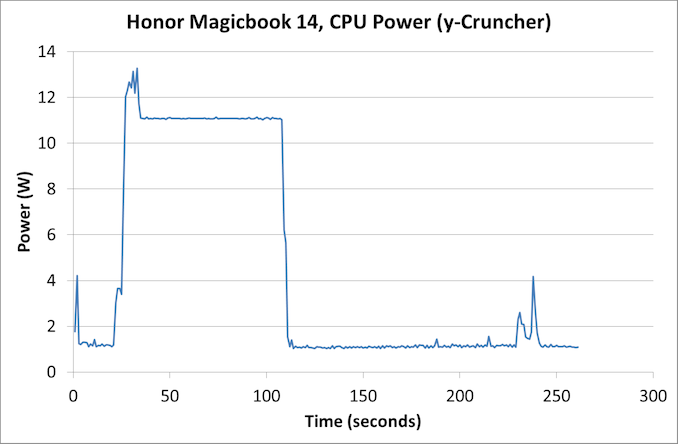
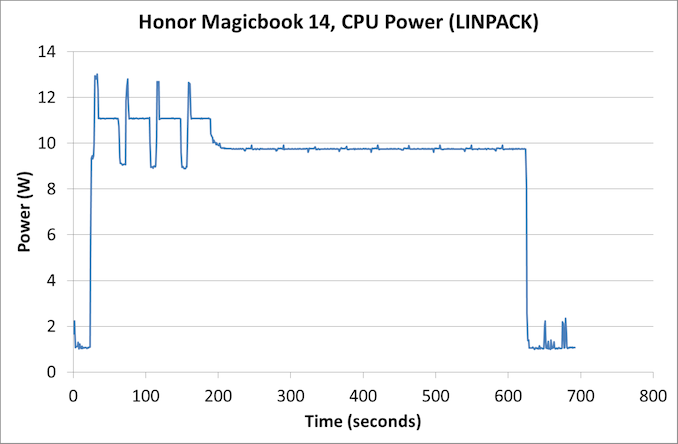
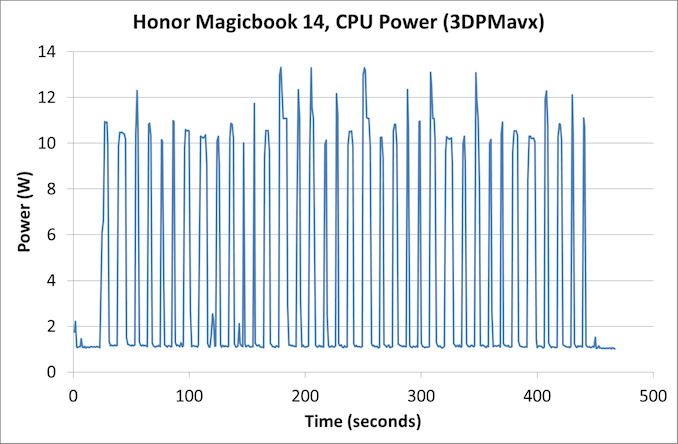
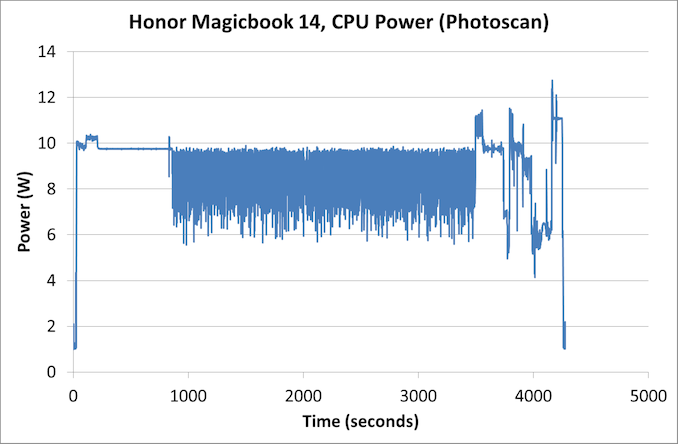

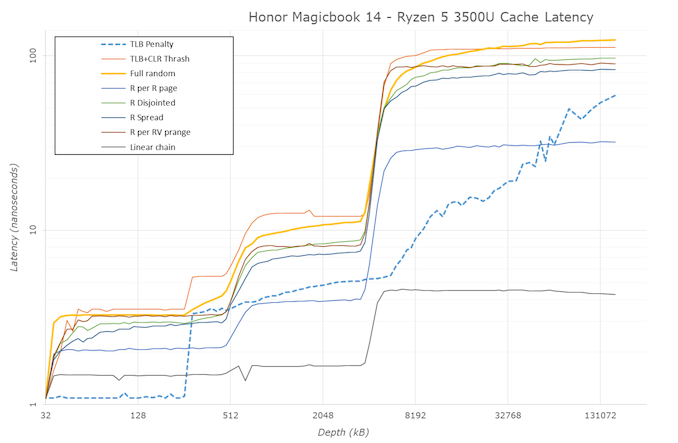








88 Comments
View All Comments
Sailor23M - Sunday, May 17, 2020 - link
Aa ha ha lov thisConnieD - Monday, June 8, 2020 - link
I agree. Wumaos out in full force.sonny73n - Saturday, May 16, 2020 - link
Go back to cnn. Stop spreading fake news here.Ithaqua - Sunday, May 17, 2020 - link
@sonny73n : I think you mean Fox "not really" News. CNN at least tries to to get some facts correct. Though Fox is more fun, knowing that they are on par with The Onion; and people think it's a real news network, not just a scam to mess with people.sonny73n - Saturday, May 16, 2020 - link
Nobody would believe your BS anymore. You’re helping your mafia government to slander competitors in order to eliminate competitions and kill free market. You’ve reached new low. How can you keep on living as a subhuman?Manofwind - Saturday, May 16, 2020 - link
When huawei's 5G equipment shipped to market, Qalcomm's 5G was still a plan then. You tell me, where to steal the 5G IP at that time?Ithaqua - Sunday, May 17, 2020 - link
@sharath.naik: Replace China with USA and communist with crippled democracy / kleptocracy and your statement still fits.There is no true free market in the world. Every country has rules to help themselves and protect those who give them money. US companies steal as well (just less obviously) and key industries are funded (in full or in part) directly and indirectly by government funds.
The "developed" world's patent & IP rules are a joke (hey Apple I'm looking at you) that either gets bent by money or abused by people who don't want to loose money. In theory it should be for the good of the citizens of the country and to help encourage R&D, not to abuse management bonuses and to stifle competition.
China is just more obvious about their abuse, since they plan things out instead of going by quarterly profit announcements. They know what to hide and what will blow over in 4/8 years.
Valantar - Monday, May 18, 2020 - link
"Free market" is an oxymoron. Markets are competitive, and tend towards monopolization if left unregulated (what's the best way of ensuring your survival if you're a leading company in a market? Buying out the competition or forcing them into bankruptcy.). Thus free-as-in-leave-me-alone markets are an illusion and become unfree as soon as someone gains enough power to exert in on others. (And don't come dragging that "market disruption" nonsense - we all know that doesn't work.) The closest one can come to a "free" (as in: fair and equal opportunity) market is a strictly regulated one.But ultimately, all market economics are based on the absurd idea that infinite growth is possible, and are based on a spiralling system of credits and debts. After all, debts have interest, so you need to bring in more money than you have borrowed. Where does that money come from? Other people's debts! So they need to do the same. If it worked it would be an oroborous, but this is just a spiral consisting of ever increasing debts and ever more precarious lives, where everyone but the super-rich lose in the end. This is not a system that is built to exist long term, and dramatic crashes are a fundamental part of it that cannot be avoided or even effectively alleviated.
Spunjji - Monday, May 18, 2020 - link
@Valantar - this is probably the best short-form summary of the paradox of the "free market" I've seen in a while. Nicely put!yannigr2 - Saturday, May 16, 2020 - link
The whole story is to prevent Huawei to become the next Apple+Samsung combined. Huawei is not considered, yet, a threat in the laptop market to US companies. A Huawei that could threaten Dell and HP, wouldn't be able to buy even a first gen i7 or an AMD Bulldozer CPU, not Renoir and latest gen Intel CPUs.